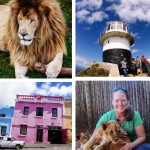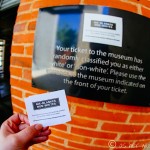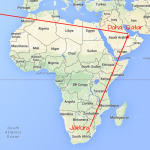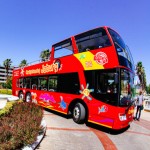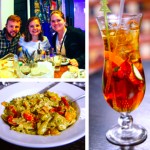Townships are a part of South Africa that I haven’t written about yet, but I’ve passed by them with regularity while traveling across this country. The term township refers to underdeveloped urban living areas that were reserved for non-whites during apartheid and, to this day, are still almost 100% non-white. They were built on the periphery of towns and cities. There is a certain level of poverty associated with townships: access to water, electricity, and a proper sewage system is problematic. Often, townships are erected near a river, but that comes with another set of problems — flooding and contamination by nearby factories or backed up sewage. Some townships are built on land not owned by the occupier so the settlement is technically illegal. Those who do own houses often add on multiple backyard shacks and then rent them out for extra income; this means that a plot of land intended to hold one family may end up holding six. This creates additional strain on the infrastructure. The government refuses to make these backyard shacks legal, but forcing its inhabitants to move isn’t a solution because where would they go?

Since the formal end of apartheid in 1994, some townships have seen rapid development and even have areas that are considered wealthy or middle class. Soweto, located just outside of Johannesburg, is one of them. Soweto is an abbreviation of South Western Township and it has a population of almost 1.3 million people. Remarkably, there is a street in Soweto where not one but TWO Nobel Peace Prize winners once lived — both Nelson Mandela and Desmond Tutu called Vilakazi Street home at various points their lives. I’m here on a two-hour minivan tour that I tacked onto my day-long hop on, hop off city bus tour; we have a local guide who lives in Soweto showing us around.
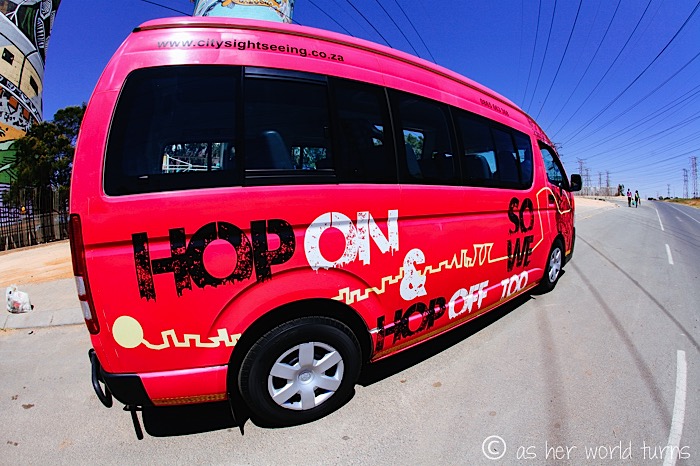
This is our guide; he’s pretty rad:
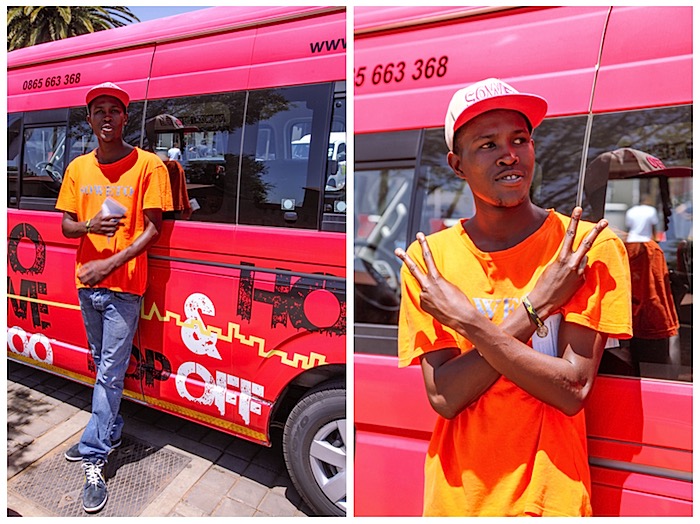
FNB Stadium (which was known as Soccer City during the 2010 World Cup) is the biggest stadium in Africa. It resembles a calabash or Zulu clay pot, traditionally served for drinking umqombothi beer. Its capacity is 94,736…! It was the site for Nelson Mandela’s first speech following his release from prison in 1990 and was also the venue for his memorial service in December 2013. Mandela attended the 2010 World Cup final game here between Spain and the Netherlands, which marked his final public appearance.

Heading towards the hills…
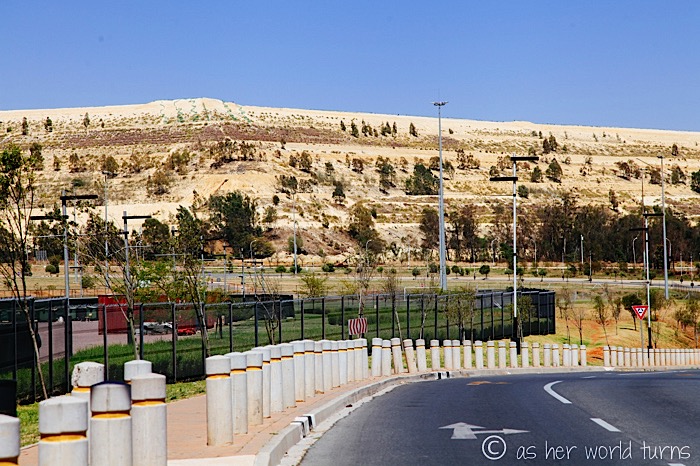
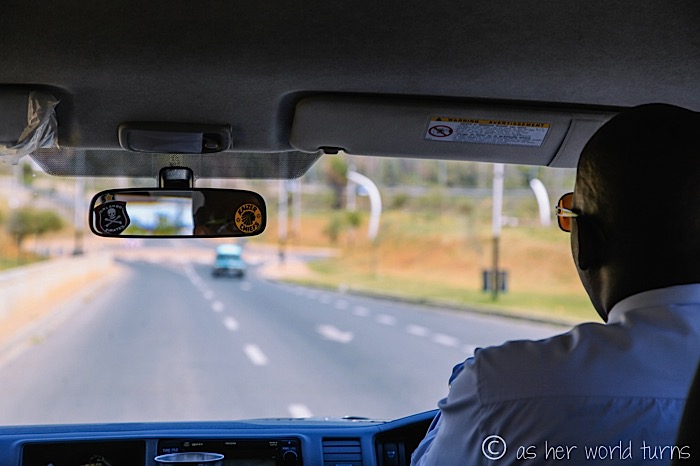

Officially entering Soweto:


Our guide points out that the occupants of these shacks are illegally tapping into the electricity of that tower below:

We stop at the Orlando Towers, a former power station that has received a colorful makeover and now serves as a bungee jump platform.


Next we visit the Hector Pieterson Memorial. On June 16th, 1976, twelve-year-old Hector was killed when police opened fire on 15,000 students peacefully marching against the introduction of Afrikaans as the language of instruction in township schools, instead of their own language. Hector was among the youngest killed that day. In the wave of resistance that followed, 600 children died across South Africa and thousands more were wounded.
According to a plaque at this site, “The nation pays homage to the students of 1976, who sacrificed their lives so that the doors of learning and culture would be opened.”


This image of a dying Hector in the arms of a fellow student tugs at the heartstrings and illustrates why his death became the face of this cause:

Next, we stop at the house where Nelson Mandela and his family once lived; it is now a museum:


Peeking through the bars for a glimpse of Mandela’s former home:

On the same street there are vendors selling T-shirts and trinkets and the like, as well as eateries like Mandela’s Family Restaurant. It’s owned by Nelson’s first wife Winnie and serves items like sandwiches, burgers, and fish & chips… plus classic Soweto bunny chow if you’re up for a culinary adventure.

I love this Mandela quote on the wall below; it reminds me of the Rodgers & Hammerstein song “You’ve Got to be Carefully Taught” from South Pacific.
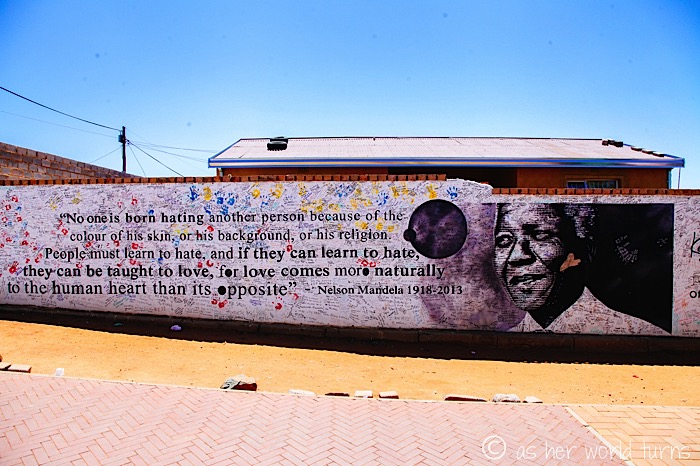

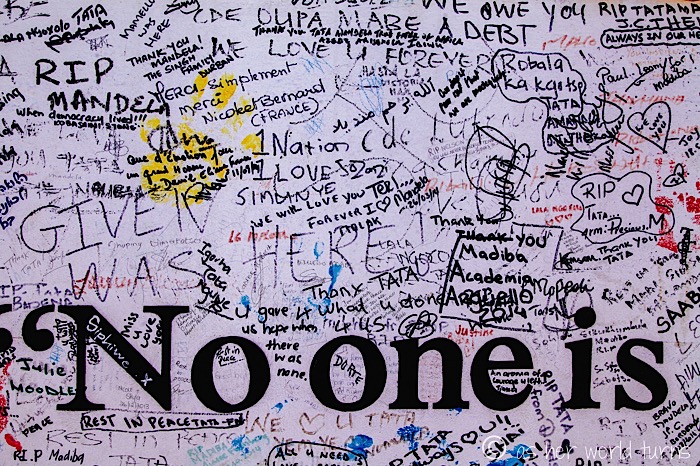
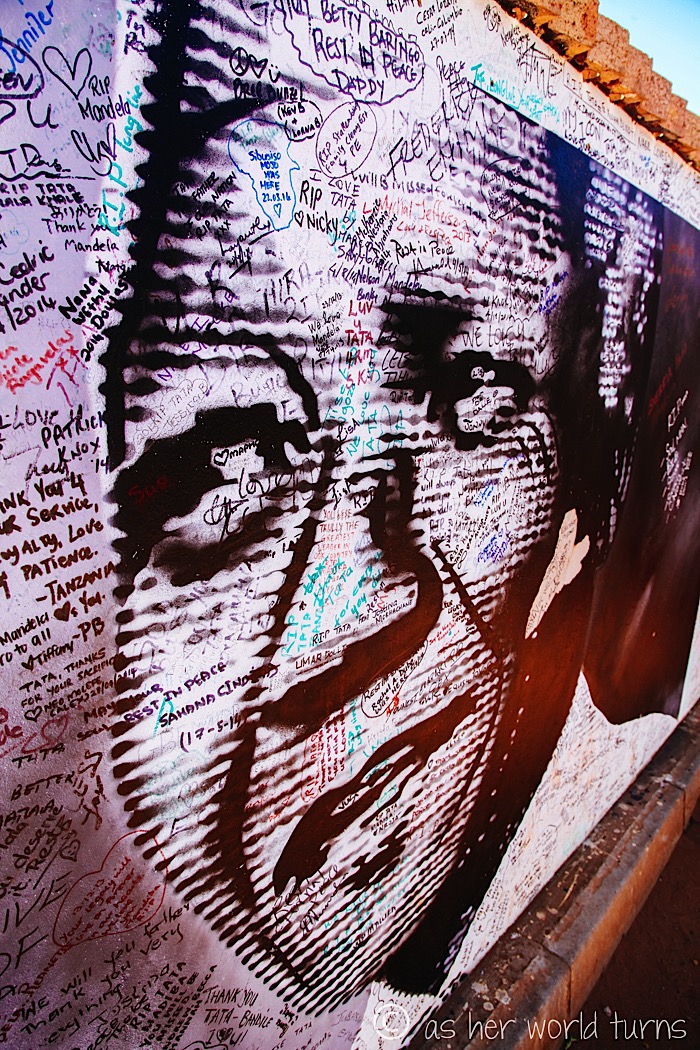
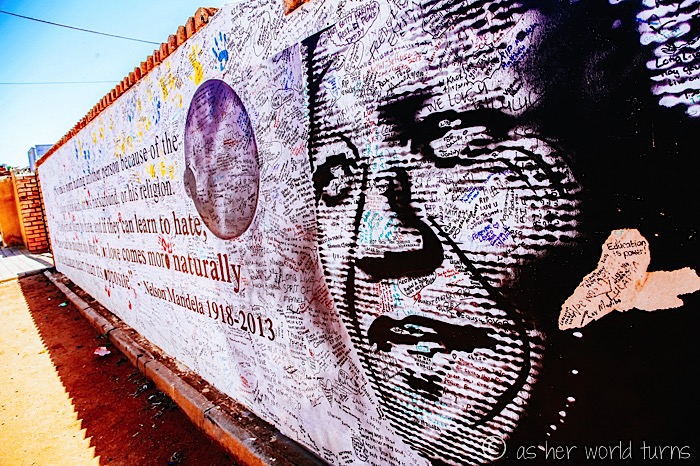
I love this next photo. Our guide’s smile is so genuine:
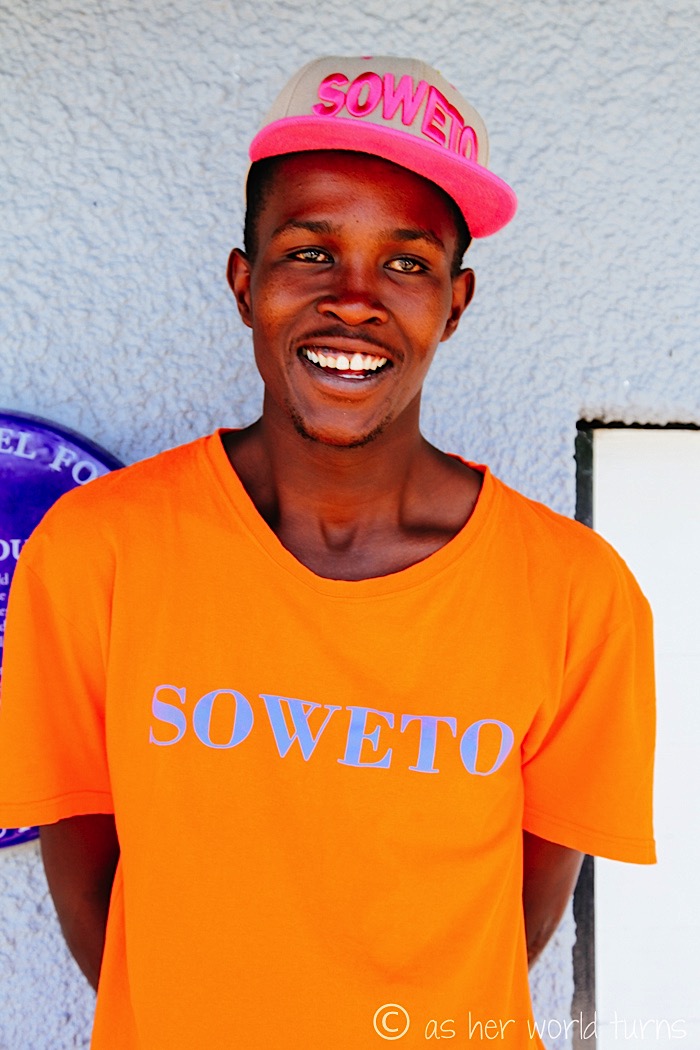
Just around the corner from Nelson Mandela’s former house is the abode of fellow Nobel Peace Prize winner Archbishop Desmond Tutu and his wife Leah. They first moved here in 1975 and continue to live here when in Johannesburg. The property is not open to the public but a commemorative plaque marks the home.

Our final stop is the Kliptown Open Air Museum in Walter Sisulu Square. This is where delegates met in 1955 to adopt the Freedom Charter, which is now the cornerstone of the Bill of Rights and South African Constitution. Its opening line is “The people shall govern” and it calls for democracy, equal rights, land reform, and more.

Inside the Kliptown Open Air Museum:


And that’s it for our brief Soweto tour. There are opportunities to tour townships with a local guide in other parts of Africa and I missed out by not doing that, so I’m glad I at least got to see Soweto.

